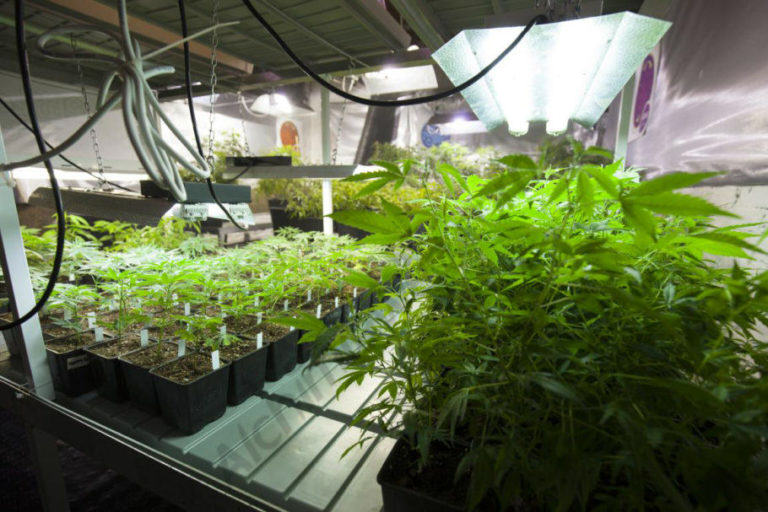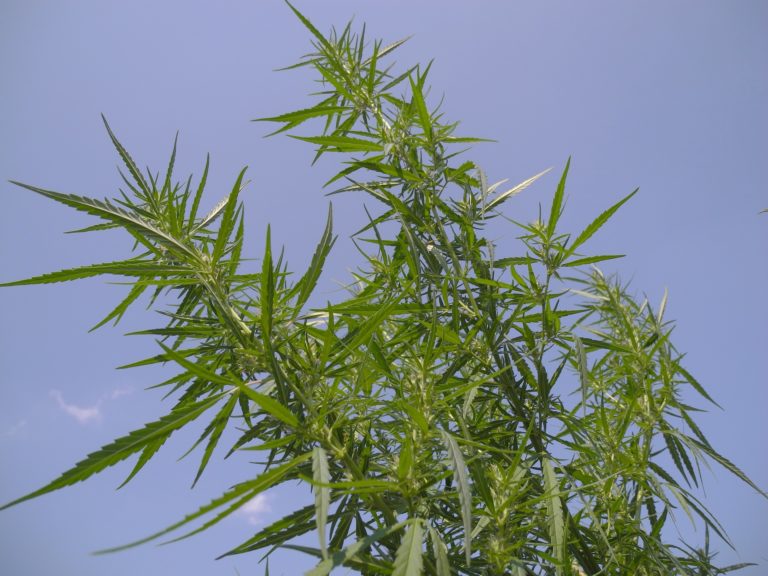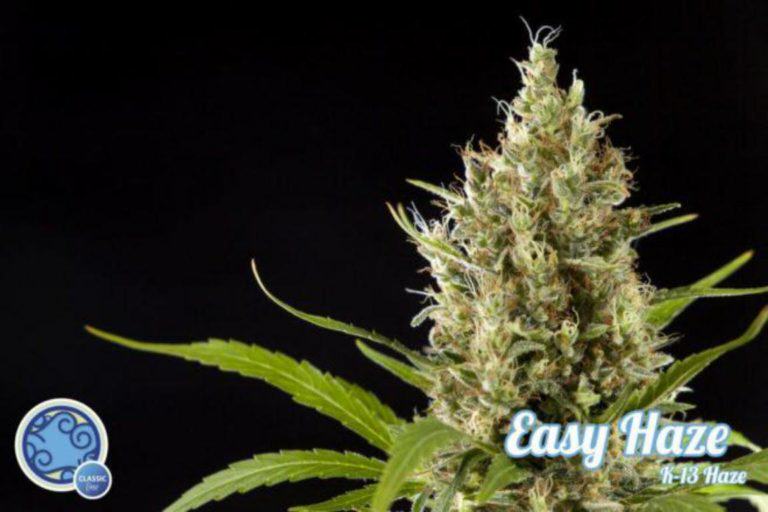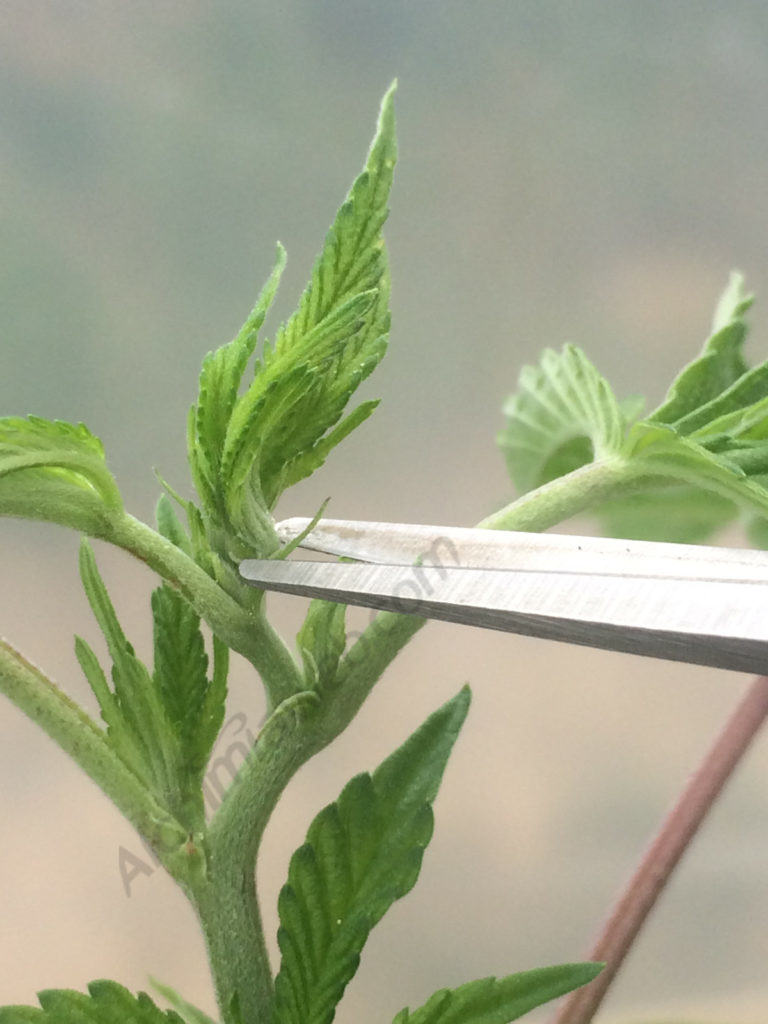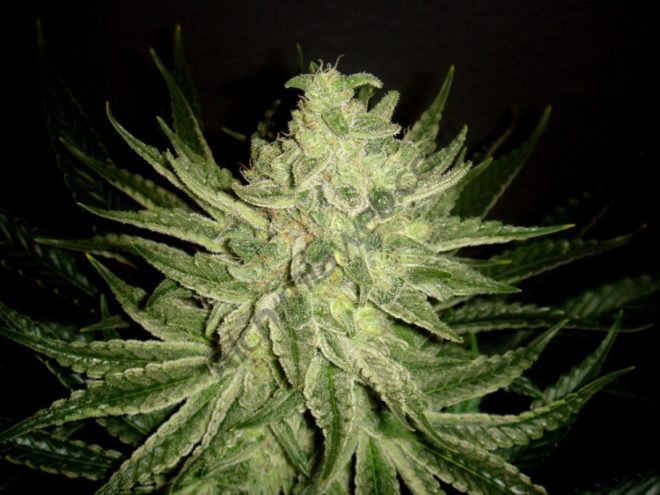The effect of cold on cannabis plants
List of contents
Cannabis as a plant species grows wild in many places of our planet Earth. As a result, we can find a great diversity of cannabis genetics worldwide. Across the different regions where these plants are found, there are significant environmental and geographical differences in altitude, latitude, temperatures, humidity, photoperiod, etc.
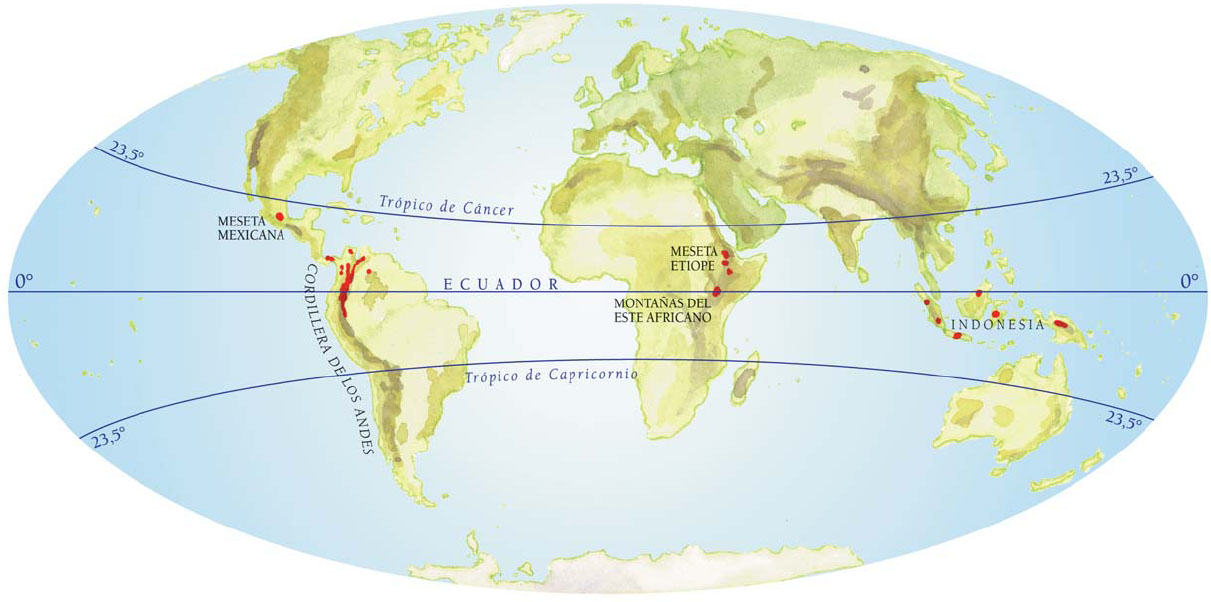
In countries closer to the tropics where cold weather is rarely experienced, it?s possible to cultivate cannabis throughout the whole year, and the Sativa or NLD (Narrow Leaf Drug) varieties that are native to this tropical region are adapted to cope with a relatively stable climate without great variations in temperature or photoperiod. As we move further away from the equator, to countries such as Pakistan, Lebanon, Afghanistan, India, Russia, China etc, weather conditions become more diverse, with clearly defined seasons and as a result, the period in which it is possible to cultivate cannabis is shortened according to latitude. The plants native to these areas are known as Indica or WLD (Wide Leaf Drug) varieties and they are well equipped to deal with wide variations in climactic conditions affecting temperature, humidity and also the effect of the changing photoperiod on plant morphology and life cycle.
When growing indoors, these adverse environmental conditions are not such an issue, we can easily recreate the optimal atmospheric conditions needed for healthy plant growth within a small indoor garden, whether a grow tent or a small grow room. Modern indoor technology allows us to completely control all the parameters - the hours of light, the ventilation, temperature, humidity, etc, and create the perfect environment to grow cannabis throughout the year.
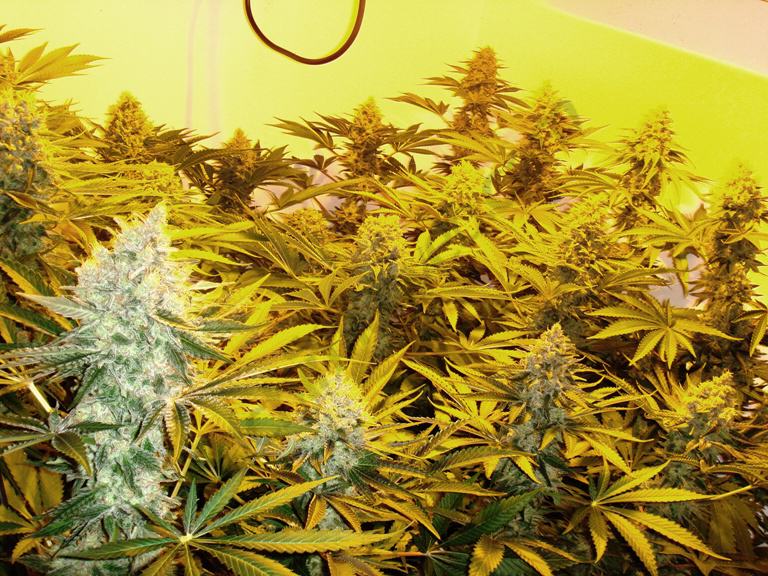
Possible problems can arise indoors during winter if the air intake to the grow room is drawing directly from the exterior. When the lights are working, this works very well to counter-act the heat produced and cool the grow space to the ideal daytime temperature of 24-26ºC; however, at night when the lights are switched off and it gets cold outside we can encounter problems as temperatures inside fall well below the comfortable night time level of 20-22ºC. An easy way of avoiding this issue is to install a temperature controller, a device that allows us to regulate the air intake and keep the ambient temperature well within the optimal parameters, thus averting any difficulties caused by excessive variations in temperature.
How does the cold affect cannabis plants?
Cannabis varieties react differently to cold, although below a median temperature of 12ºC they are universally at risk of death. As with water, which at higher temperature contains a lower concentration of dissolved oxygen, once the air cools to below 18-20ºC the plant's metabolism will slow down gradually and hinder or halt development.
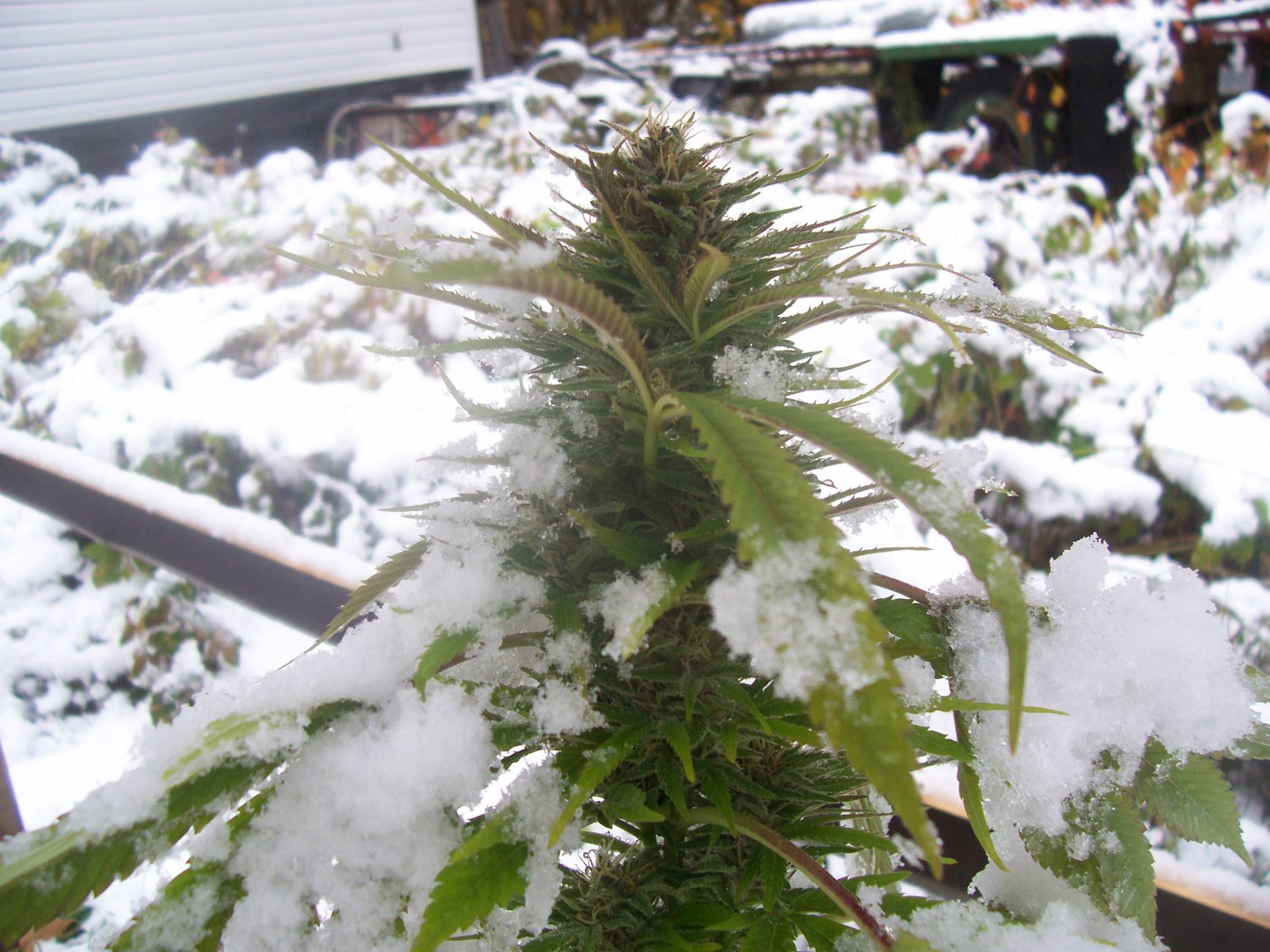
As the plant's metabolism slows down everything becomes much less active. The bio-chemical and enzymatic processes required for healthy growth cannot take place and vegetative vigour disappears leaving plants small and weak. The root system cannot function as it should, rendering it unable to absorb adequate nutrition. This will have an obvious negative impact on yields, leading to very small buds and vastly reduced production.
As previously mentioned, low temperatures will detrimentally affect the root system and the uptake of nutrients, particularly in the case of magnesium. This micro-nutrient is vital for the proper development of the cannabis plant and if the substrate is colder than 18ºC then this element is most likely not being absorbed by the plant.
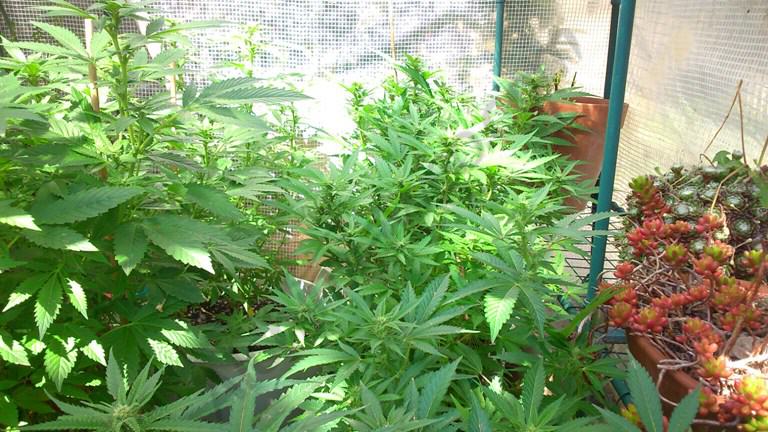
If, in addition to a low cultivation temperature, the growing medium is over-irrigated or water-logged, then the plant will be completely unable to take up magnesium, leading to visible deficiencies in the larger leaves, which even the application of magnesium in every watering will be unable to solve.
As we can see, controlling the temperature of our grow is integral to a successful cannabis harvest and there are various options available to help us do this, adaptable to each grower's needs based on dimensions, ambient temperature, lights used etc.
How to avoid low temperatures indoors
The most common solution to heating the grow space is to use an electric heater; however, this has it's disadvantages, mainly it's high consumption of electricity as usually devices of 1500-2000w are employed, but there are other problems with this type of heater, for example the drying effect it has on the air, requiring some degree of humidification, and the direct, non-radiant nature of heat distribution which makes it difficult to maintain the even, stable temperature that plants enjoy throughout the whole grow space.
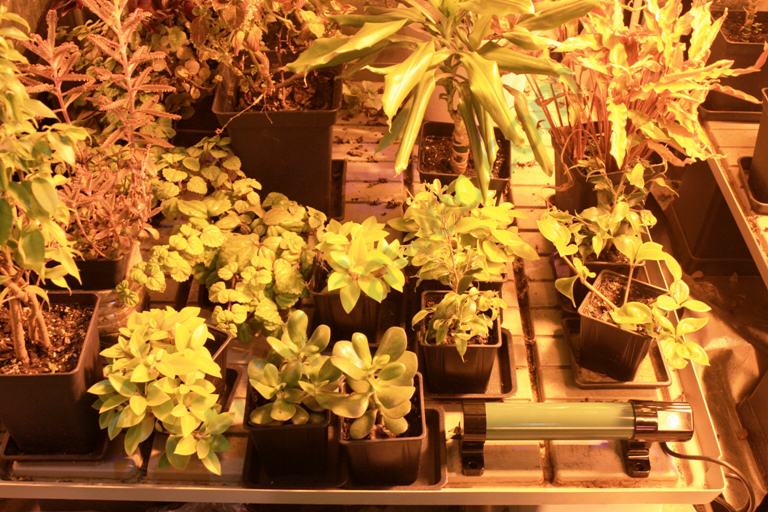
Another option to consider is a portable oil-filled radiator, similar to the popular wall-mounted electric heaters, but with wheels for mobility and convenience. These radiators are a good option but not perfect; their size makes them difficult to conveniently use in a regular grow tent and besides, the consumption is far from negligible at over 1000w. While it may be possible to rig something up if the heater won't fit into the tent, using a large, well-sealed cardboard box and a small fan to direct warm air from the heater into the tent, it's far from a permanent, practical solution to the demands of a small grow space.
Of all the options available on the market today, the most simple and effective is to use a small sized tubular electric heater. This device only consumes a few watts of power, making it a very good option for those grow boxes with minimum floorspace of 0.60m2.
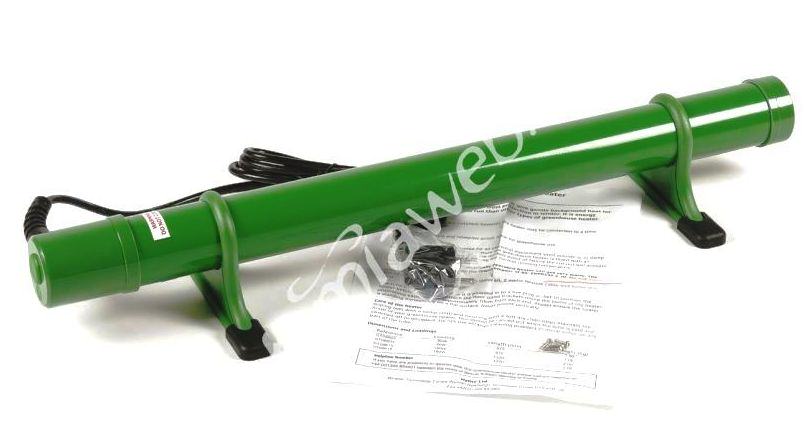
The 90w heater, 61cm long or its other version of 122cm and 135W both have IP55 rating, a kite-mark indicating resistance to splashes and dust ingress, making them ideal for using in a greenhouse or indoors.
For the best results, we can place the heater on the floor of the grow tent, installing legs with adjustable height to raise the grow tray, or as a rudimentary method, use some empty plant pots under the tray to raise the plants off the ground and allow air to flow around the base.
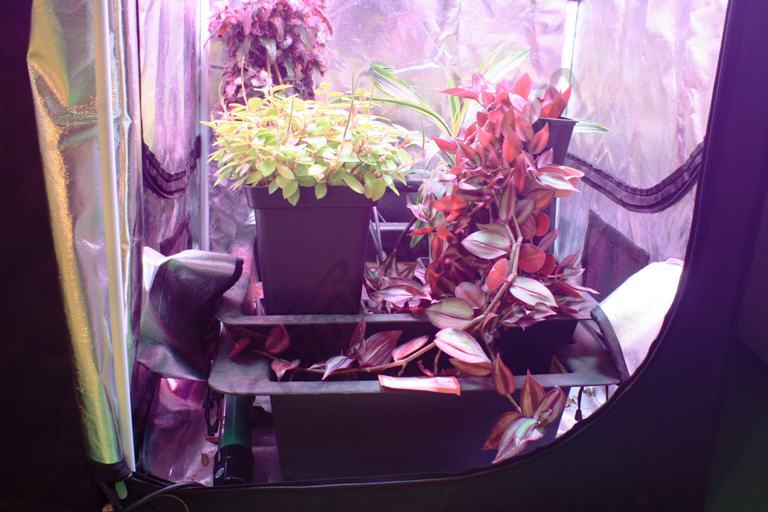
As the warm air is less dense than the cold air, it will rise and pass between plants until settling at the top of the cabinet. In order to not lose this heat and keep temperatures constant it's necessary to halt the air extraction-fan for a few hours. We can easily do this with the help of a temperature controller programmed to switch the fan off when it reaches a certain temperature, and then activate it again when it drops below that point.
Situating the heater underneath the tray has the added advantage of warming the substrate and root system, encouraging healthy growth and permitting greater vegetative vigour, in turn leading to a bigger and better quality harvest of buds.
Radiating cables for indoors
Another highly convenient option to consider if for some reason we can?t install a tubular heater is the use of heating cables of the type normally used in propagators for germination of rooting cuttings or in terrariums to acclimate reptiles to their artificial environment.
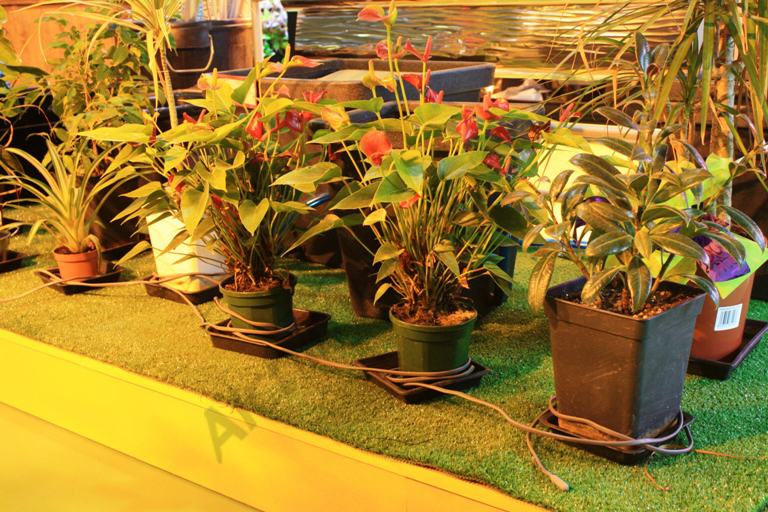
These radiant cables are available in different sizes, enabling us to find different options to suit our growing needs. Being pliable, we can loop them around the bottom of the plant pots so that the entire root system is warmed and can expand with ease. For large pots, it's recommended to employ a cable for each pot, or use it for two or three pots in the case of a smaller sized containers.
Taking advantage of the cold in cannabis growing
As already mentioned, cold temperatures can be highly detrimental to cannabis plants, especially in their early stages of development. In this first period, the seedlings require 20-24ºC to grow properly; however, in the last weeks of flowering things are a little different.
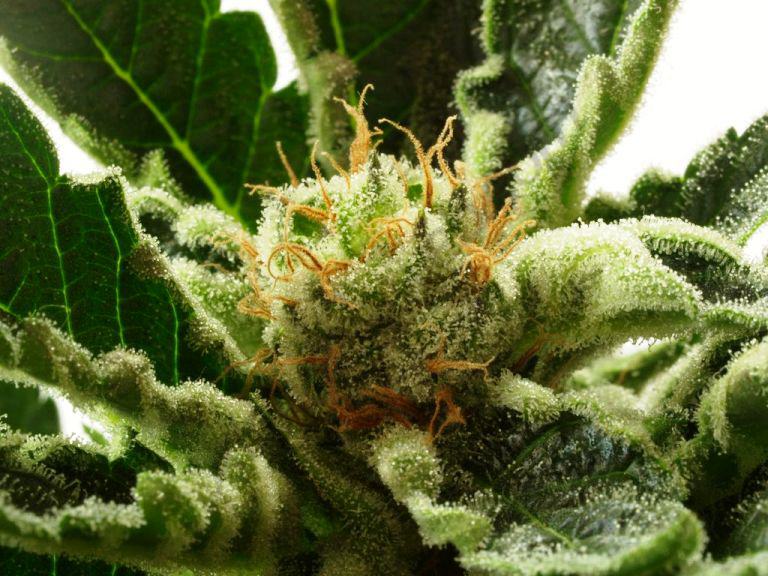
If the plant is flowering in a well-controlled growing environment, the genetics will be able to express themselves fully, blooming without problems and forming beautiful and elegant buds with a high resin concentration. The natural function of the resin gland is to essentially protect the plant and it's developing seed from extreme conditions like UV rays, cold weather, pests etc, and this way it works to preserve the genetic reproduction (the seeds) and ensure the continuation of the line. Taking this into consideration, it is possible to find a way of taking advantage of cold conditions and, if the timing is right, harness the low temperatures to increase resin production in the flowers.
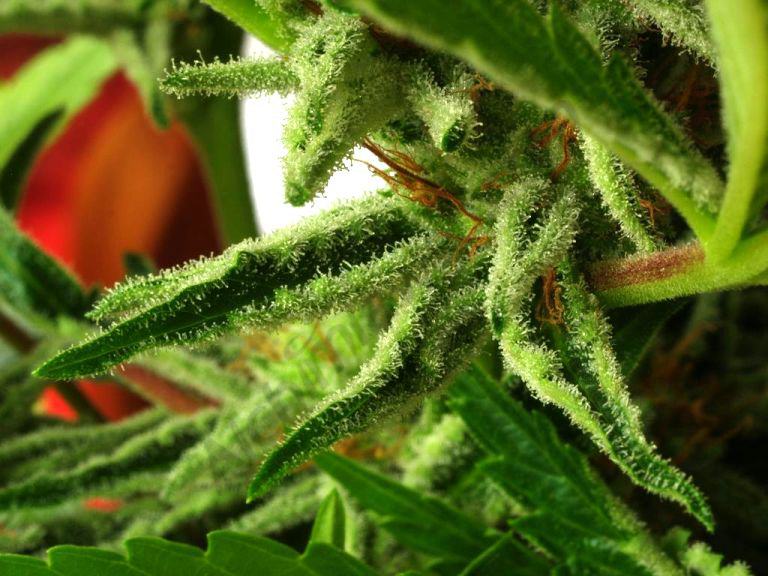
The cold, being a considerable stress upon the plant, triggers changes in the plant's metabolism which, when they occur in the final stages of flowering, can lead to an increased resin production. If we gradually lower temperatures to around 16-17ºCduring the last two weeks of bloom, once the buds are fully grown and only need to mature, it's possible to achieve a much greater and higher quality resin coverage in exchange for only a very slight sacrifice in production weight.
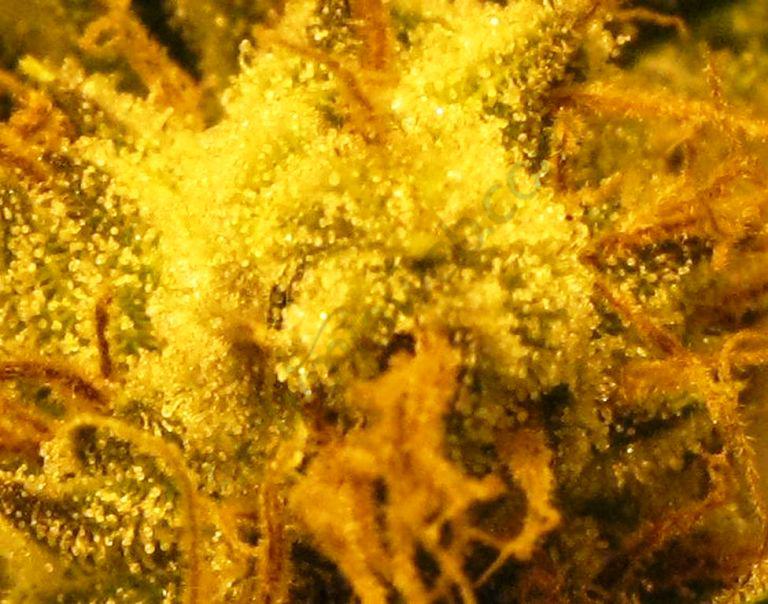
The cold and it's effect on flavour and colour
It's also worth mentioning that encouraging lower temperatures during the later stages of flowering will retain a higher terpene content and can lead to harvesting more aromatic and flavour-full flowers. Higher temperatures during flowering, drying and curing means that the evaporation and subsequent loss of terpenes can seriously alter and degrade the organoleptic properties of the buds produced.
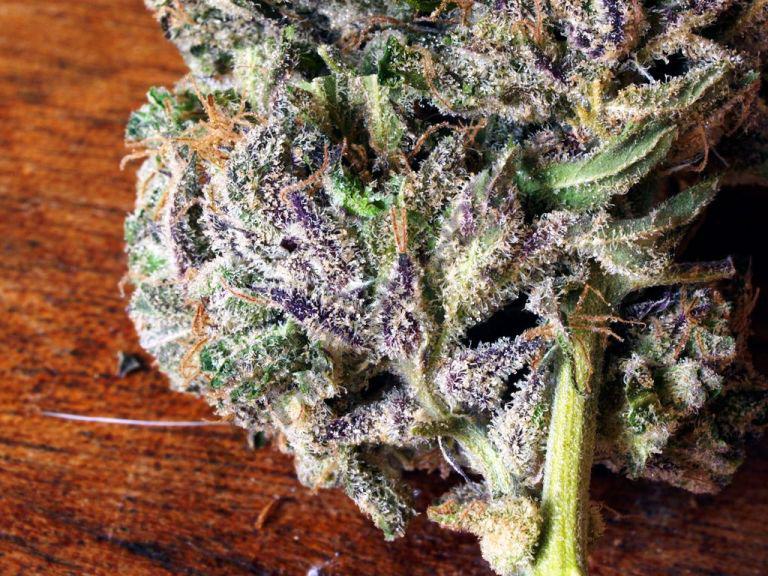
For lovers of bright colours another advantage of cold weather in relation to cannabis cultivation is the wonderful array of autumnal shades that the low temperatures provoke in certain genetics. Many plants will change the colour of their foliage to a beautiful deep purple, blue or red in cold conditions during the last weeks and when this is combined with the natural 'fade' colours of senescence the display can be truly spectacular and a fitting finale to a successful grow!
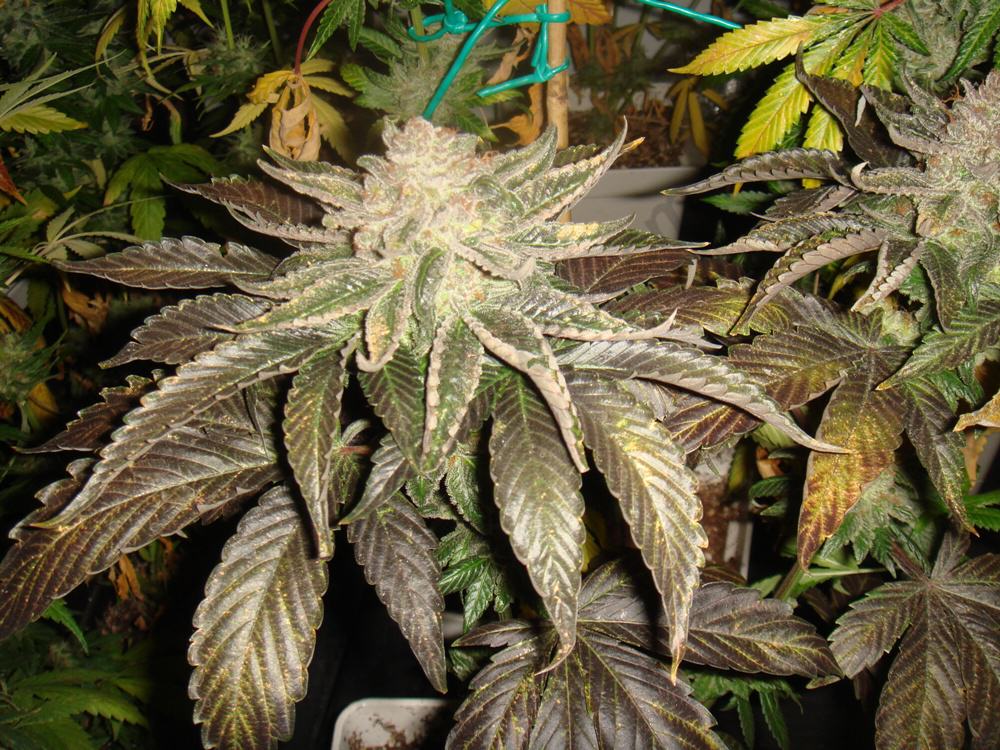
Here we have a couple of examples of the color changes produced in different cannabis genetics, in particular those belonging to the Blue family of varieties. In these cases the low temperature at the end of flowering has affected the plants, provoking a very notable color change and an increased trichome concentration on the buds.
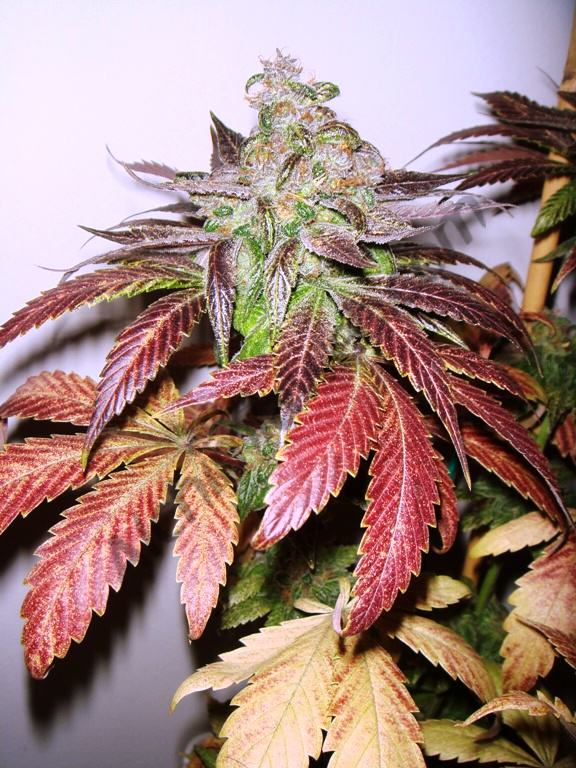
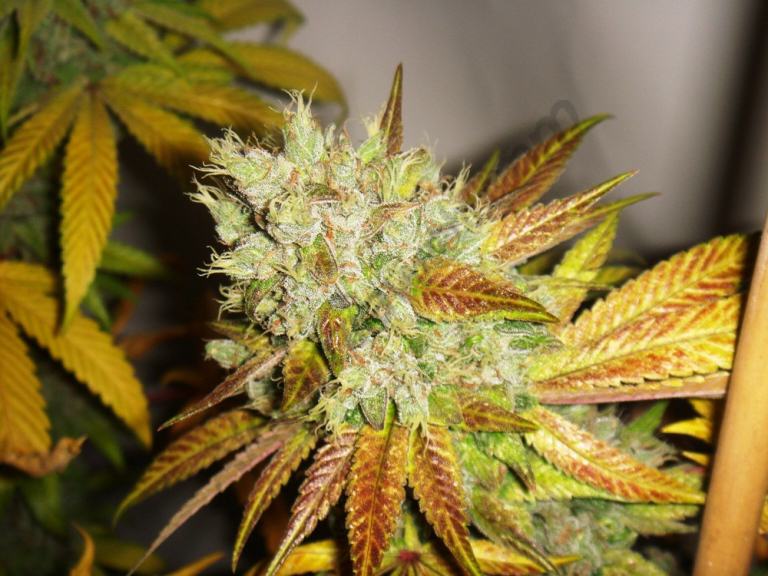
Resuming, it's clear that if properly done, and at the adequate moment, cold temperatures can be used to a positive effect when cultivating cannabis; however, for normal cultivation, during the majority of the plant's life cycle it is imperative to keep the temperatures within the parameters for healthy growth, between a minimum of 20ºC and a maximum of 26ºC.















































